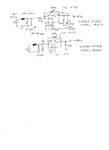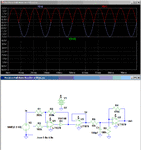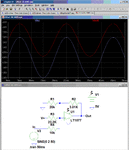P.Copper
Member level 5
Greetings,
Need to know where to look to find information on how to rescale sensor voltage.
I have a sensor that outputs 1.4V (rms) for 230V (rms)
What kind of ways are there to change this output to 0-3.5V so I can feed it to ADC of dsPIC?
Somebody told me a OpAmp? but I couldn't seem to figure out how to make it do what I wanted.
Need to know where to look to find information on how to rescale sensor voltage.
I have a sensor that outputs 1.4V (rms) for 230V (rms)
What kind of ways are there to change this output to 0-3.5V so I can feed it to ADC of dsPIC?
Somebody told me a OpAmp? but I couldn't seem to figure out how to make it do what I wanted.


